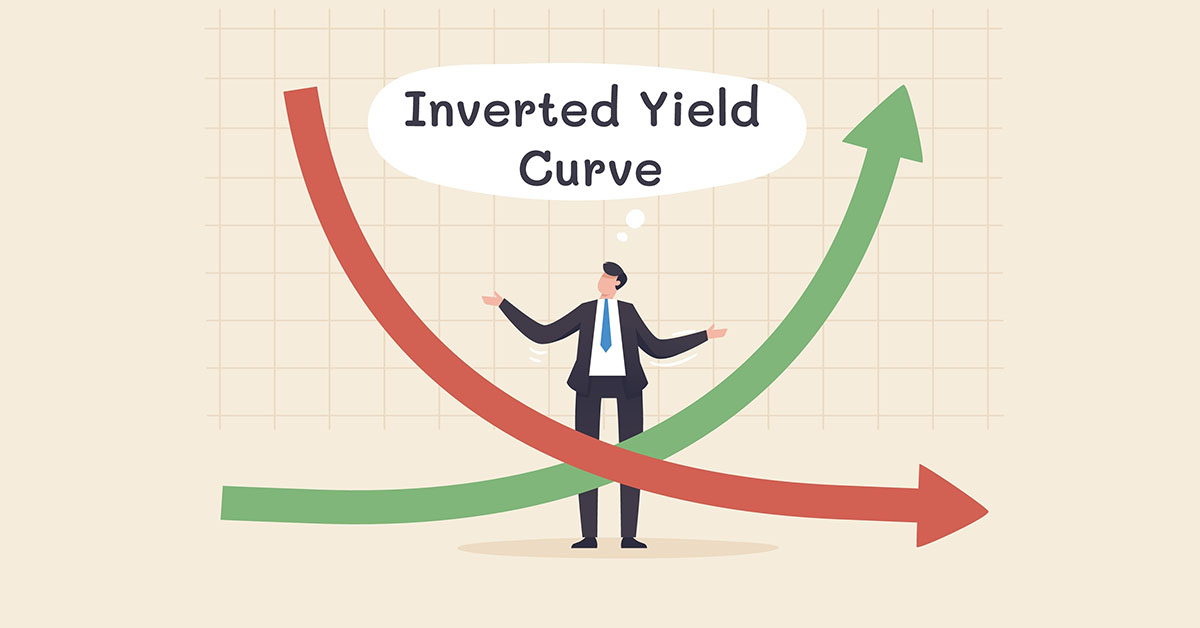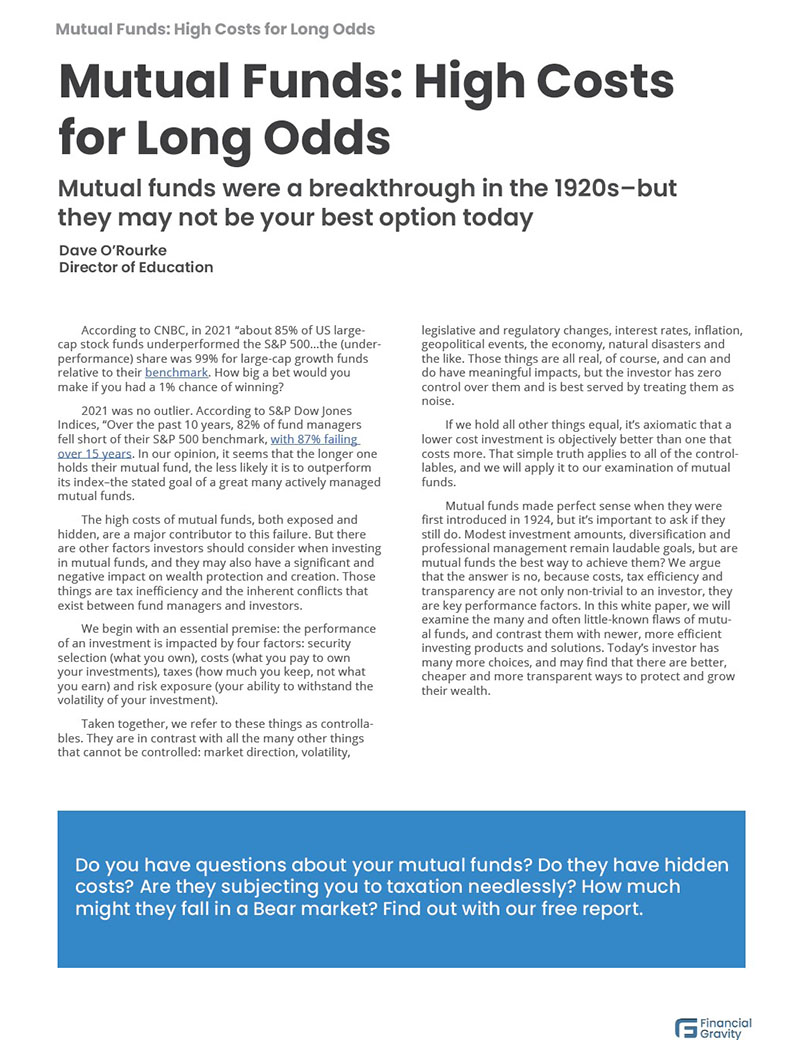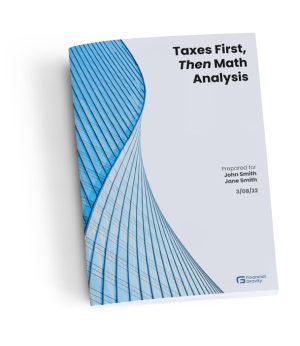Hundreds of thousands of years of human evolution have created a finely tuned fight-or-flight response system. When we hear predictions of doom with enough urgency, we act. Some of the great doom quotes from movies and books are “The Russians are coming,” “The sky is falling,” and, “You’re going to need a bigger boat.” In the world of securities investing, we have plenty, including “The yield curve has inverted.”
The yield curve has, in fact, inverted. In case you’re wondering what the term means, it describes a situation in which debt instruments with longer maturities are traded for a lower interest rate than those with shorter maturities. In practical terms, it means that the yield on your bonds decreases the farther out your maturities go. Often, the proxy for this compares the 2-year Treasury with the 10-year Treasury.
As of July 7th 2023, the current yield on the 2-year Treasury was 4.99%, while the 10-year T-Bond was at 4.07%. Long-term interest rates are indeed less than short-term rates, so we do, in fact, have an inverted yield curve. It’s called a curve because of its shape when graphically depicted.
Canadian economist Campbell Harvey coined the term in his PhD thesis at the University of Chicago in 1986. It caught on and persisted as a doom quote in the stock and bond business because it has been a reliable leading indicator of recessions in the U.S. And it gives talking heads on the cable investing shows a juicy lede.
Inverted yield curves are unusual, and occur during times of economic uncertainty. A reasonable person may have rationally concluded that all times are uncertain, and that the future can never be reliably predicted, no matter what the overall level of consumer confidence is. Consumer confidence at this time is mixed.
According to the Conference Board, the Expectations Index, a measure of consumers’ near-term outlook for income and employment, was at 79.3 in June 2023, perilously close to 80, the mark generally associated with a recession in the next 12 months. While up from May, the Index has been below 80 every month since February of 2022, except for a brief blip last December. We appear to be on a sort of knife-edge of recession, but that is by no means certain.
Historically, yield curve inversions have been short-lived, lasting fewer than 10 months. But the late ’70s inversion lasted almost two years and was ultimately followed by the severe recession of 1982. Inversions also presaged the “Tech Wreck” and the “Great Recession.”[1]
Contrarians will assert that yield curve inversions have accurately predicted five of the last nine recessions because they are not always followed by a downturn in the economy. However, it has given a false positive only once in the past 70 years, which is a pretty solid track record.
If we add the inversion to the Expectations Index and then throw in the recent Gallup poll, which shows only 18% of Americans believe the country is on the right track, it seems there is some justification for pessimism. But we must also remember that we are in a period of persistent inflation, which the Fed is fighting with interest rate increases. Taken together, it’s reasonable to expect a recession in the coming year.
Practical Advice to Consider
This can all get very real very fast, because recessions are often preceded by bear markets. That sort of double whammy, where assets deflate before the economy contracts, is a danger zone for the average investor. The bad news can, and very often does, last longer than the patience or discipline of many people, who eventually capitulate and sell out of their investments. Those worn-out folks will wait to reinvest only after confirmation that the markets have fully and reliably recovered, which completes the sell-low, buy-high vicious cycle.
The following are some pieces of practical advice, grounded in decades of stock market research and observations, that may help you avoid that trap. Hopefully, they will give you some support if, or when, the predictions of doom really get loud:
Patience is a virtue in investing. Legendary investor and Warren Buffet right-hand man, Charlie Munger, has wisely noted that “The big money is not in the buying or the selling, but in the waiting.” Munger was referring to the investing philosophy that has guided his life, and there are few better role models.
Impatience has been a killer of portfolio returns. Media star portfolio manager, Peter Lynch, produced an average annual return of 29% with his Magellan Fund, which he directed from 1977 to 1990. Yet, almost unbelievably, the average investor in the Fund had a negative return[2]. All they needed was patience to do very well. There are too many similar stories to recount.
Returns are lumpy. Between 1930 and 2020, the S&P 500 had negative years 29 times, almost exactly one-third of the time. Famed investor and founder of DoubleLine Capital, Jeffrey Gundlach, has noted, “You make 80% of your money in 20% of the time in investing, and you have to be patient.” Patience is a major theme among successful investors, but it is also something that’s sorely tested during downtimes.
Your 401(k) will benefit from dollar cost averaging. When the market dips, your regular retirement plan contributions buy more stock. Think of it like Nordstrom’s Annual Sale, or Black Friday for stock. Yes, Black Friday does have negative connotations for many investors, but everybody loves a sale—except during bear markets. Consider this, though: that’s when the Mungers and the Gundlachs get very happy.
Be like Rip Van Winkle. The S&P 500 has never had a negative 20-year return. The worst 20-year period, 1930 – 1949, which included both the Great Depression and World War II, still enjoyed about a 2% annual return. 90% of the rolling 20-year periods since 1926 have averaged 7% or higher, 75% have been above 8%, and 56% of the time have been above 10%. We can’t suggest you sleep through all the noise, but we can recommend you try to ignore it[3].
You lived through some very tough times already. If you’re reading this, you have survived some really dramatic things. Recessions and bear markets, for sure, but also wars, catastrophes, scandals, and too many predictions of doom to count. Yet through it all, with all the storms and stress and ups and downs, the world has moved forward. You’d be wise to place your bets on humanity; after all, if that bet were ever lost, your portfolio won’t be your main concern.
[1] investopedia.com



